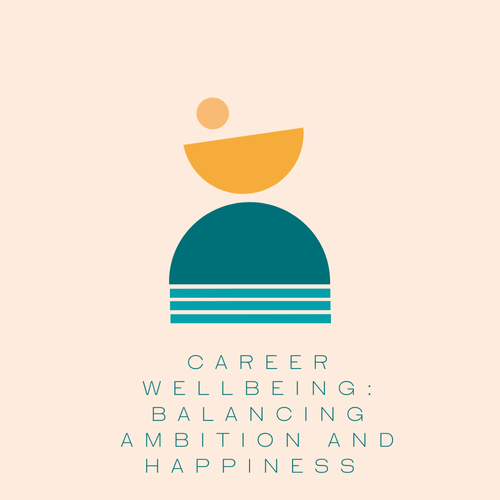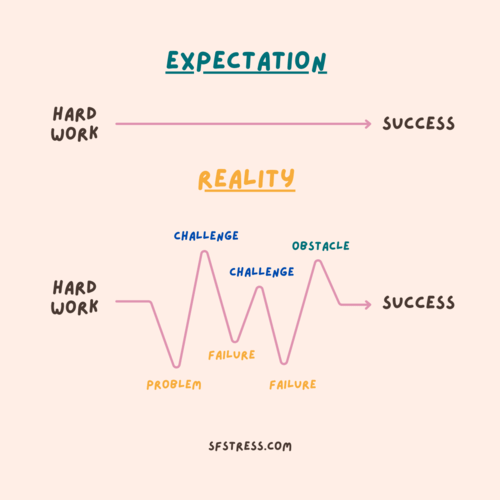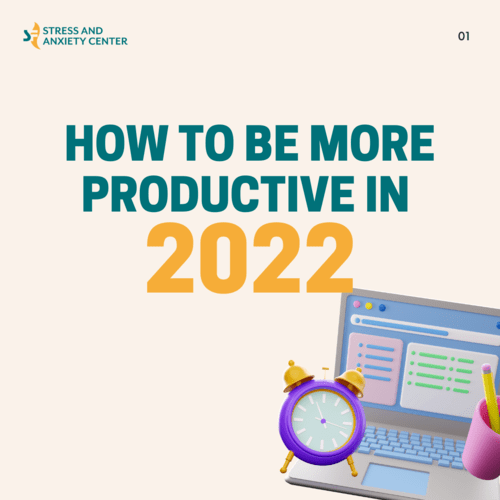Picture the scene: you have a job that you love, working for a great company. But, this has been your life for the past five years. Surely you need to be more ambitious? Perhaps now is the right time to be moving “onward and upward”?
So, your boss recommends you for a manager role, which you take. But soon you seem to be spending all your time in meetings, and you have so much paperwork that you swear you can hear your desk creaking under the weight. Eventually you find yourself asking, “When did I become so unhappy?”
Seeking progress for the sake of progress can often leave us feeling deflated, and even more unfulfilled than we did in a lower-ranking job. So, where’s the line? Is there a conflict between ambition and happiness?
WHAT’S HAPPINESS GOT TO DO WITH IT?
For many of us, career success brings genuine happiness. But when this stops being the case, we need to re-evaluate what makes us truly happy. A promotion might bring more money and new challenges, but the trade-off could be that you spend less time at home, or you have to deal with a lot more pressure.
Many people spend their careers – and their lives – pressuring themselves to achieve more in the hope of obtaining the ‘perfect’ jobs. But, what we to focus on is creating more with doing less. Just as money doesn’t buy happiness, a high-powered job won’t always get you job satisfaction.
What Drives Us to be Ambitious?
Before we contemplate a big career move, it’s important to assess who is motivating us to move on. Often, we are our own worst critic. All it takes is that nagging feeling of self-doubt that we aren’t doing enough, and we begin to push ourselves to achieve more. But this can leave us feeling drained and disappointed if we don’t reach the goals that we set for ourselves.
Self-criticism is neither a healthy nor a productive method of career advancement. And those of us who are prone to it will likely benefit from a change of mindset (as opposed to a change of job) if we want to achieve real job satisfaction.
Alternatively, some people feel pressured to strive for bigger and better things because they fear that their peers will view them as lazy, lacking drive or enthusiasm. But, it’s important to remember that what’s right for others, isn’t always what’s right for us.
We shouldn’t rely on the fulfillment of the expected to be happy. That is to say, we shouldn’t be driven to achieve what others expect of us. Instead, we need to recognize where and when we are truly satisfied with our work.
It’s a Balancing Act
Working parents are a perfect example of well-balanced ambition. Many parents are expected to “make up for borrowed time” after returning from maternity or paternity leave. Instead, plenty of parents will strike a careful balance between their home and work lives. They will put less pressure on themselves to constantly achieve and, instead, set themselves realistic goals over a longer period of time.
They understand that in order to pursue their own family ambitions, it may take longer to reach their career goals. In this sense, it may be worth letting career ambition take a back seat to happiness. This doesn’t mean that working parents are no longer ambitious in their jobs. Rather, they work out how to reach their full career potential without making themselves miserable in the process.
Work to Live or Live to Work?
By remembering that there is more to life than work, we can alleviate some of the pressure that we, and others, put on ourselves to achieve.
That said, we should never underestimate the power of ambition. It’s an invaluable source of motivation, and it can help us to accomplish the goals that matter most to us. Nonetheless, we should beware the dangers of being over-ambitious. This can force you into a job that you don’t really want, and may greatly damage your home life. The ability to recognize what does and doesn’t make you happy can be the difference between under- and over-stretching yourself. So, in short, be careful what you wish for.
Have you ever experienced the negative impact of over-ambition? Or maybe you’ve felt pushed to take a promotion you didn’t really want?
Here are some tips on how to balance ambition and happiness in a healthy way:
Rediscover Your Mission
It can be easy to become so unshakably transfixed on achieving professional objectives such as banking a certain salary or earning a prestigious job title that your original purpose is forgotten. Mired in busywork and the daily ins and outs of your duties, you may lose sight of the bigger “why” that drives you. Without a sense of purpose, you climb the ladder success with profound emptiness.
When this happens, dedicate intentional time to re-orient back to your mission. Take a day or two to refocus. You don’t have to travel anywhere. You can simulate a professional mini-retreat by asking yourself big questions like “What would I be doing if money wasn’t a problem?” or “When do I feel most alive?”
Through this internal exploration, you may come to realize is what you want more than a promotion or raise is the opportunity to make a meaningful impact, lead a team or simply feel more validated and appreciated at work.
Value The Process Over The End Result
In study after study, social scientists have found that external rewards and traditional financial incentives don’t improve employee performance. They may actually backfire, making it difficult for people to come up with creative solutions.
Instead, research shows high achievement is the result of intrinsic drivers–that is, a desire to do something for inherent interests, self-fulfillment or enjoyment. Motivation increases when people have the desire to perfect their craft. Successful people enjoy the learning process and don’t mind when it continues beyond an expected time frame. They relish in the journey to mastery. They focus on the happiness cultivated along the path to a particular goal, not necessarily a material outcome.
Try savoring how satisfying closing a huge sale feels, how deeply loved and seen you feel when family take note of your accomplishments or appreciate the increased recognition your company is receiving in the industry.
Commit to a System
Setting a big, hairy audacious goal–like publishing a book or launching a startup–can be a fantastic catalyst for change, but it’s not enough. You must commit to a process of taking action on a consistent basis.
Start with the question, “What could I do daily that would guarantee a result and move me forward?” to design your habit system. If you’re an aspiring author, create a weekly writing schedule. If you’re an entrepreneur, devise standard operating procedures to streamline your efforts. Whatever it is, it has to be an action you can sustain over time.
Recognize That Success Is Fluid
Understand that metrics of success—whether related to career, fitness, love or whatever else—are fluid and dynamic. There is always a higher rung in the ladder and over time your targets change. The ideal career when you’re in your 20s may be a poor work-life fit by the time you turn 35.
Instead of prescribing to career milestones society dictates you should have reached by a certain age or salary bracket, keep your options open, define success on your own terms and embrace the many opportunities you encounter on along the way.
Rather than work to attain a “cure-all” end goal, it’s important to view life as a succession of practices that build an imperfect yet wonderful big picture. Greatness comes from years grit, effort and many stumbles along the way.
Need some help finding the balance? We have a fantastic Resilience Coach that can help with just this.




